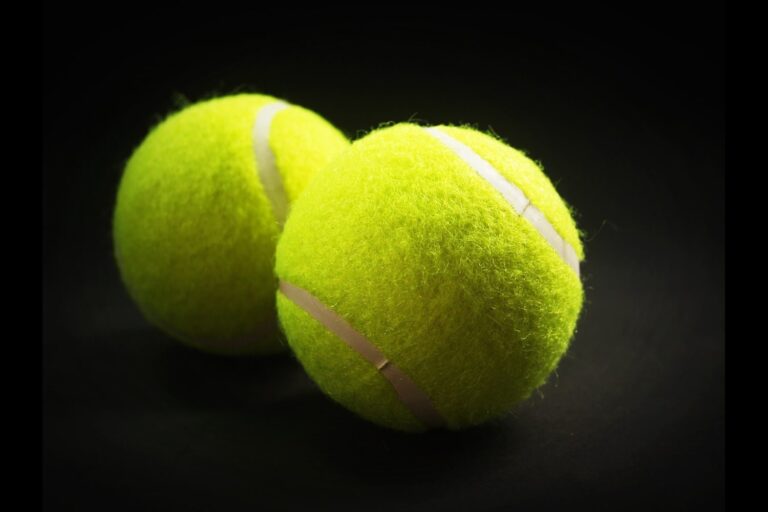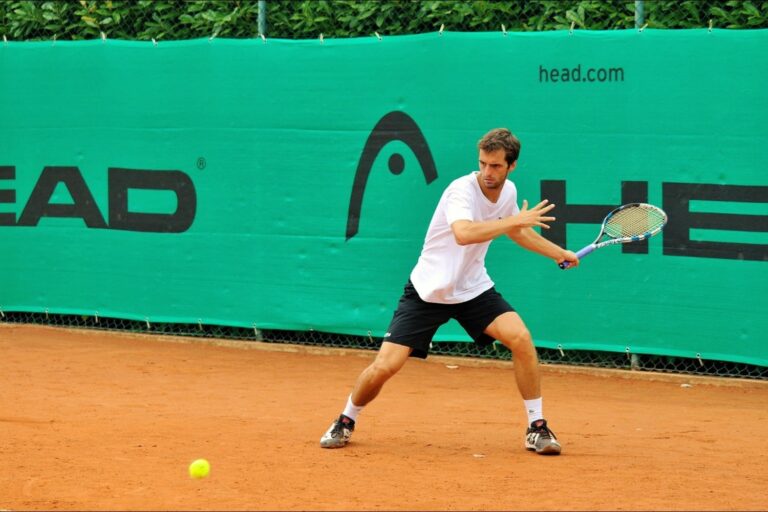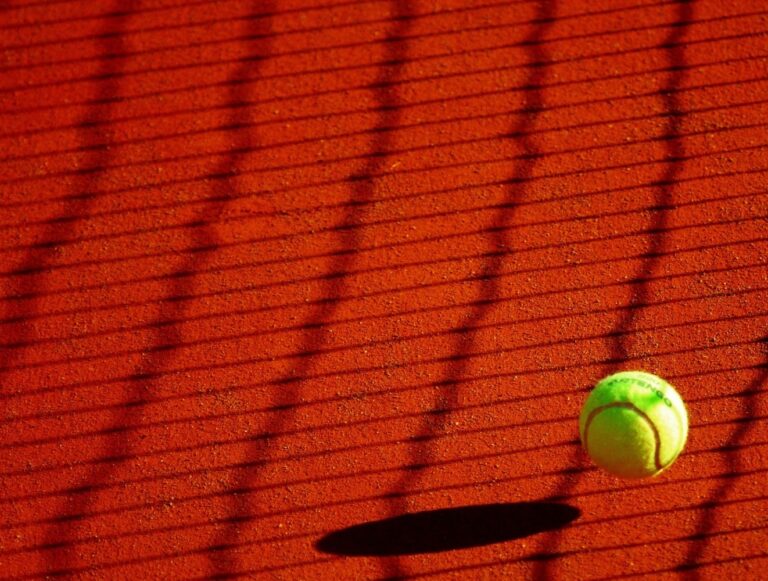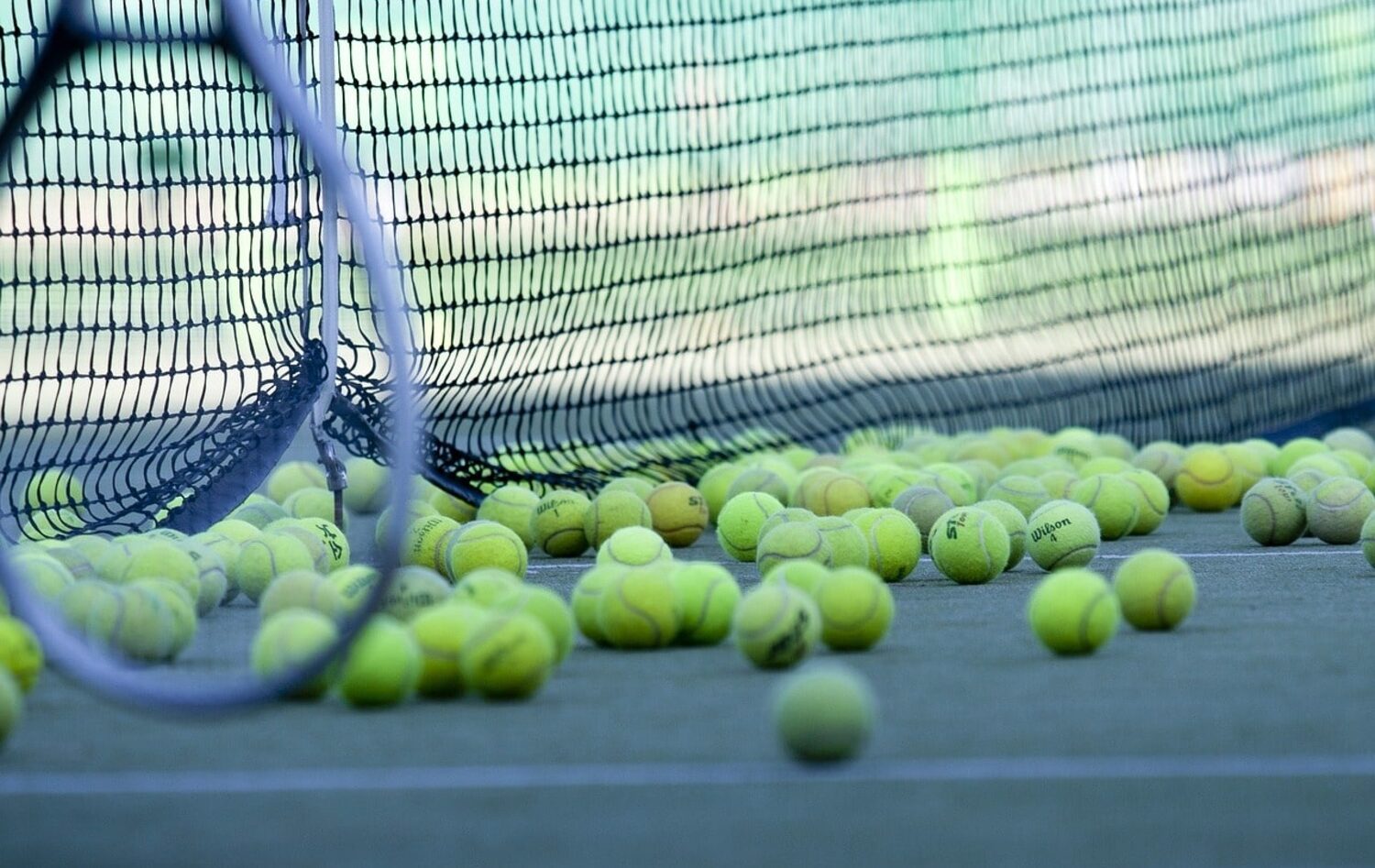Tennis balls that don’t rely on internal air for a bounce are the Pressureless Tennis Balls. Pressureless Balls feature a solid rubber core as compared to a pressurized one. Pressurized tennis balls have a hollow center filled with pressured air. Pressureless Tennis Balls bounce poorly when they are new to their pressurized counterparts. But as the outer felt fades and becomes a little bit older they do bounce well.
Do you have any studied Pressureless Tennis Balls Review? Don’t worry if you have not read it before. If you are a beginner, this blog post is only for you. I will write the complete Pressureless Tennis Balls Review. People who have not played with Pressureless Tennis Balls should read this article. Let’s start with the topic.
Pressureless Tennis Balls are the underappreciated alternative that has great resilience. These have extra longevity and can save you money. They have many disadvantages, though, and there are situations in which they work best. The distinctions between pressureless and pressurized tennis balls are distinct in this article. Their benefits, drawbacks, and recommended applications are also described. I also list the top products available that I have personally tested.
Table of Contents
ToggleCharacteristics Of Pressureless Tennis Balls
Solid Core
These balls have solid substances rather than compressed air inside them. Their resilience and reliable operation are often facilitated by this sturdy core.
Longevity
These have longer lifespans than pressurized ones since they don't lose air over time. Even after months in storage, they hold up as well.
Casual play
Pressureless balls are a great option if you are only an occasional player. Pressureless balls continue to function even after months of storage. But pressurized balls lose their bounce.
Best for tennis ball machines
Pressureless balls work best in tennis ball machines, they are resilient and long-lasting. They don't lose work even when subjected to the harsh conditions of machine drills.
Best for practice sessions
Pressureless balls are great for longer practice sessions because they bounce. It is best for practicing alone or practicing with any partner.
Construction & Composition
Their rubber construction, may bounce and return energy without nitrogen or air pressure. Pressure-free balls may not bounce as well at first as their pressurized counterparts. But as the outside felt starts to degrade, their bounce gets better with time.
To provide the highest performance these have a different construction. The interior structure of Pressureless Tennis Balls differs from pressurized ones.

Core
A solid rubber core makes up pressureless balls. They are not filled with nitrogen or air, in contrast to pressurized balls. These balls have thicker rubber and more robust, long-lasting outer felt. In contrast, the latter allows them to live longer because their lifespan is far longer. Pressureless tennis balls provide them with more bounce.
Felt Cover
Pressurized balls resemble the exterior felt cover. It offers stability, grip, and a steady bounce. It's important to remember that only pressureless tennis balls have the same feel. Rubber substance allows for the distinction of one pressureless ball from another. Tennis balls have air, launched by ball machines by passing through 2 rotating wheels. It puts a great deal of pressure and force on the outside. To get the most life out of the balls, felt makes sure they don't wear out too soon.
Micro-Cellular Technology
Tretorn introduced a new pressureless tennis ball in 1998. Like most models on the market, these had a thicker rubber wall and durable felt. They advanced the situation, though, by packaging the balls. The center is often packed with some 700 million microscopic, air-filled plastic microcells.
Every machine fires or launches tennis balls by passing them through 2 wheels. It applies a great deal of pressure and force to the exterior.
An unpressurized ball is the end product, but it’s not quite pressureless. Since they lie in the middle of the pressurized and pressureless range. So their construction sets them apart and puts them in a different class.
Bounce Mechanism
The way pressureless balls keep their bounce without internal pressure is magical.

Rubber Core Resilience
When a ball strikes, the solid rubber core compresses and decompresses. The appropriate bounce is often produced by this resilience.
Lifespan
Pressureless balls have a very long lifespan. They are perfect for prolonged practice sessions as they keep their bounce over time.
Packaging and Appearance
You’ll see a few variations when you buy pressureless tennis balls:
Lifespan
These are often packaged in mesh bags or plastic buckets as opposed to plastic tubes. They have different packaging because they are not pressurized. Thus, you won't find them in the typical plastic tube packaging. Buckets or plastic bags with netting are common substitutes. Wilson's balls are an anomaly, as they are also packaged in cardboard tubes. Some producers place them in airtight plastic tubes. Tretorn Micro started producing new tennis balls with a thick rubber wall. These are very durable, felt utilizing microcell technology 25 years ago. Over time, several million microscopic plastic cells were also added, filling the center.
Surface Texture
Because there is no internal pressure, the felt cover may appear different. It has a solid interior surface and a fuzzy outer surface.
Court Suitability
All court surfaces exhibit high performance from pressureless balls:
- Hard Courts: On hard courts, they bounce well.
- Clay Courts: They adjust to the bounce of clay floors.
- Grass Courts: On grass courts, pressureless balls are an efficient tool.
- Indoor Courts: They continue to compete inside.
Advantages of Pressureless Tennis Balls
Pressureless tennis balls are not given enough credit. I can make a strong case for the improved performance of a pressurized ball. But many players won’t notice a big change. Their benefits exceed their drawbacks.
Let’s go over some of the main justifications for switching.
Longevity
The longevity of these balls is the best for making the investment and switching. On the high end, a can of pressurized tennis balls can last up to one month. But in my experience, a can of pressurized tennis balls only lasts roughly one to two weeks. If you're playing at a higher level or hitting two to three times a week.
At the professional level, balls can switched after 7 games and continue for 9 games. Since there are only 6 tennis balls in play at any given moment.
You won't need to replace Pressureless Tennis Balls as soon because they can last up to a year. When all else is equal, pressureless will do much better than pressurized.
Whatever kind of ball you're using, there are a few things to think about that affect longevity.
Tennis ball quality
Certain balls are more durable and of higher quality than others.
Play Frequency
You live a shorter life the more you play. They won't last as long if you're a strong player who hits hard and with spin.
Court-type games
Played on hard courts have a longer lifespan than those played on clay courts. Comparing indoor and outdoor play, the balls will endure longer in the former case.
Elements
Tennis balls damage faster in the sun and rain than if you prevent these. If you use pressureless balls in a good way, you will only need to replace them occasionally.
Durability
Because pressureless balls never lose their bounce, refer to as "forever balls." Pressureless balls keep their core integrity and reliable performance throughout time. Pressureless tennis balls are suitable for all types of courts, like hard, clay, and grass
Save money
You'll save money because you won't need to buy tennis balls as fast. You should be thankful for the Pressureless Tennis Balls' longer lifespan. If you play 2-3 times a week and use pressureless balls, can save the annual cost.
All courts versatility
The fabric covering may wear out, but the core stays unaffected. Because of their versatility, they can used in a variety of playing environments.
Cheap Resolution
Pressureless balls are inexpensive because of their durability. Particularly for use in clubs or tennis ball machine practice. Pressureless balls are a great deal if you don't mind losing the fuzzy fabric covering.
Perfect for Tennis Ball Dispensers
Ball machines can handle the demands of using Pressureless Tennis Balls. They endure well even after frequent usage in ball machine drills.
Disadvantages of Pressureless Tennis Balls
Although many players find pressureless tennis balls to be a great alternative. There are some drawbacks to using them. It makes sense that for people, the drawbacks are insurmountable.
But if none of these drawbacks worry you, you should try and see how well they work.
Spin
The extra weight affects topspin, making it harder to produce. While comparing the two kinds of balls, more players can distinguish a difference. It makes little impact, though, and players are still able to produce a lot of topspin.

Feel and comfort
Pressureless balls tend to feel a little stiffer and weightier than pressurized ones. Because these balls have higher weight and thicker rubber. After a few hours of play, you should notice that they break in and become less rigid. It helps soften the tougher rubber. Their feel is further enhanced by warmer weather. You might wish to avoid using them if you have arm problems, such as tennis elbow. Some players may experience increased discomfort when wearing them.
Sound
The sound a tennis ball makes as it leaves your racket is not something you consider. While utilizing pressureless tennis balls, there's a noticeable change in sound. The different sound bothers certain people. Some people won't even notice or won't give it enough thought to worry. Either way, if you're used to using pressurized balls, it's worth noticing a difference.
Heavy Weight
In comparison to pressurized balls, pressureless balls usually have a heavier feel. They may feel a little "dead" at first. The ball stiffness results in increased impact force when in contact with the racket.
Limited Initial Boun'sce
New, pressure-free balls could not bounce as high as those that are under pressure. But as the felt covering ages, they bounce better and better. This first restriction may be clear to those accustomed to the more bounce.
Less Suitable for Competitive Matches
Pressureless balls are great for drills they are not for competitive matches. When used in competitive play, pressure-treated balls provide improved topspin and performance.
Ideal Uses
Pressureless Tennis Balls are excellent for tennis in all situations. They have their specific uses where they’re better valued and will save you money.
Ball-Machine
When using a ball machine, pressureless tennis balls are by far the greatest choice. Because are durable, which is necessary for cheap and optimal performance. I've tried using these balls in my ball machine a couple of times they chew through. Furthermore, they lose pressure more fast. They are much more resilient and don't need to change as often. These Pressureless Tennis Balls are ideal for use in tennis ball machines. Furthermore, they lose pressure more fast. It would be too expensive to buy pressurized tennis balls with a ball machine.
Practice & Coaching
Repetition is important when practicing, thus you should keep a basket nearby. So you can hit more balls and spend less time chasing after or retrieving them. If you put pressurized tennis balls in your basket, it might turn into a costly habit. You might discover that they begin to expire before you've had a chance to use them more. Pressureless Tennis Balls are a great choice for tennis instructors or practice. Their performance won't deteriorate for months if you put them in a basket.
Recreational Play
Pressureless balls are great if you play with friends and family and get some exercise. You can buy them once and have them available for playtime. It's unlikely that you'll distinguish between them and pressurized balls.
- Buy a can of tennis balls, using them only once. Then going out to play a few weeks later only to find that they have died. Dogs love tennis balls as toys, whether they’re chewing on them or playing fetch. If your dog is larger than average, it can tear off or gnaw through the felt fast.
- If so, pressureless tennis balls last longer because of their stronger rubber cores. You need to lower your expectations based on the breed and how they interact with toys. Even though a high-quality pressureless tennis ball is more resilient. Some dogs can tear through both kinds with ease. If that’s your main reason for wanting to buy both, it might not be a no-brainer.
Best Pressureless Tennis Balls
As I have stated in this guide, some pressureless balls are superior to others. Some are more durable than others, based on the variety I’ve used in my ball machine.
Also, some have superior performance and feel than others. Those I’ve tested and listed below work well, even with their subtle variations.
-
Premium
The best of the best are these first three pressure-free tennis balls. Even though they cost more money, I’m willing to pay more for a high-quality ball that will last.
These quality balls are all suitable for use with ball machines.
- Spinfire
Australian-based Spinfire makes some of the greatest tennis ball machines. But they also sell pressureless balls that work well with their Spinfire Pro 2 machine.
You might find that they have different tennis balls depending on where you live. Balls are such as SetPoint Pulp, Spinfire Juice, and Spinfire Touch. Having used them all, I can say that they have varying qualities.
Spinfire Juice; Fast, a little stiffer, and durable.
Spinfire Touch; A more conventional feel with softer rubber.
Setpoint Pulp; Between the Spinfire Juice and the Spinfire Touch is SetPoint Pulp.
The durability and toughness of Spinfire cause severe abuse in my ball machine. Their feet will flatten, like the majority of pressureless balls. These will reduce the amount of topspin produced. But throughout their lives, they continue to give outstanding performances. It took me a year and a half to use them all before I decided to recycle.
- Tetron Micro x
Tretorn started producing tennis balls in 1902, and 1998. They developed their Micro X tennis ball. With this product, almost 700 million air-filled plastic microcells are inside the balls.
Tretorn Micro X performs well despite the extra weight. Their durability is superb, I’d give the edge to Spinfire’s products in this department.
Micro X tennis balls have a louder pop. These are a great option if you can get over the noise.
-
Trinity & Trinity Pro
One of the most well-known brands in the sport, Wilson Sporting Goods, debuted the Trinity. Revolutionary pressureless tennis ball, in 2019 and prioritized sustainability. It produces less waste since is a pressureless tennis ball. It lasts far longer than a pressurized ball. But they also put these balls in completely recyclable cardboard sleeves.
Wilson’s worldwide environmental initiatives are well supported with 5% of Trinity sales proceeds. In the case of performance, Wilson’s pressurized tennis balls are heavier than Trinity’s.
They’re not quite as durable as Tretorn or Spinfire. But they’re still good enough to use with a ball machine. These balls feel better and are the closest thing to pressurized tennis.

-
Penn
Penn is a market leader and one of the most available solutions for pressurized tennis balls. While I wouldn’t consider Penn to be the best pressureless tennis ball available. They are still a great choice for everyday play and practice.
The fact that Penn’s tennis balls are dependable and well-rounded is a favorite feature. They’re not spectacular in any way, but they’re still my favorite in this category.
-
Gamma
Gamma is a respectable tennis manufacturer that offers a selection of stringing machines. accessories, and tennis strings. Gamma is among the top manufacturers of kid’s tennis balls. It is a growing market even though they don’t specialize in performance tennis balls.
Their adult-sized pressureless balls are a good choice that fulfills all the expectations.
Final Thoughts
In conclusion, Pressure Tennis Balls do not contain internal pressure. They are without internal pressure or air. Pressure Tennis Ball is very beneficial for the different types of court. These balls perform well on hard, clay, indoor, and outdoor courts. Pressureless balls have good spin and shots as compared to pressurized balls. Because pressureless balls never lose their bounce, refer to as “forever balls”. These balls have longer life due to felt covering. When using a ball machine, pressureless tennis balls are by far the greatest choice. Because are durable, which is necessary for cheap and optimal performance.
In comparison to pressurized balls, pressureless balls usually have a heavier feel. They may feel a little “dead” at first. Although many players find pressureless tennis balls to be a great alternative. There are some drawbacks to using them. Such as The extra weight affects topspin, making it harder to produce. Pressureless Tennis Balls tend to feel a little stiffer and weightier. The sound a tennis ball makes as it leaves your racket is not something you consider.

